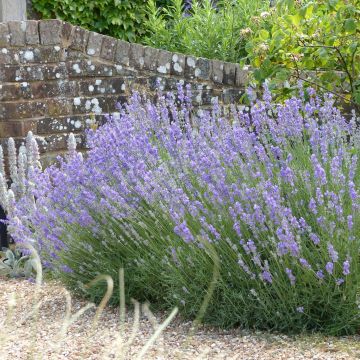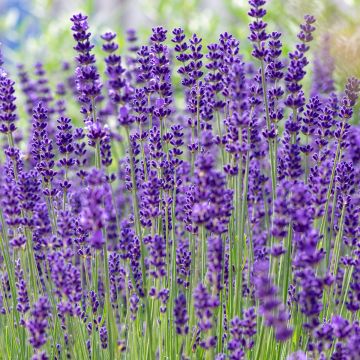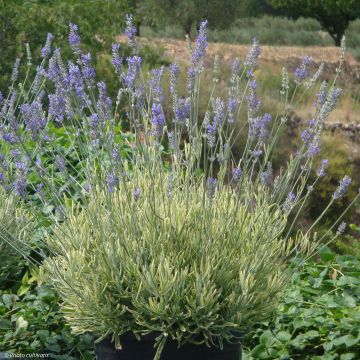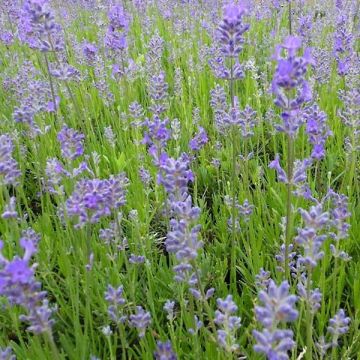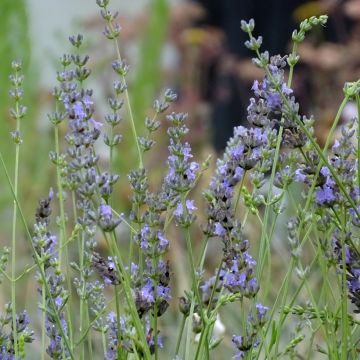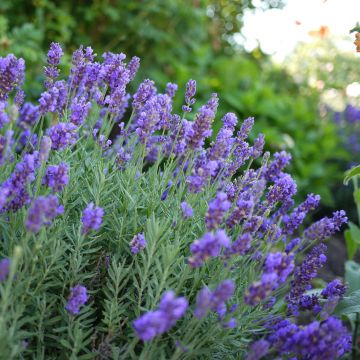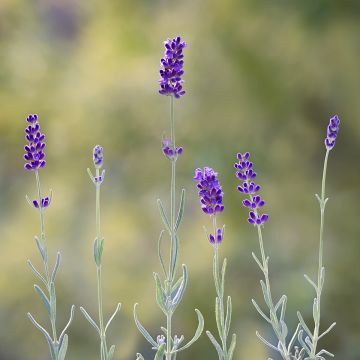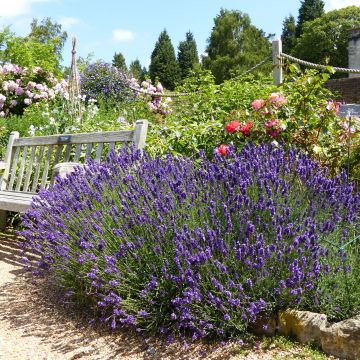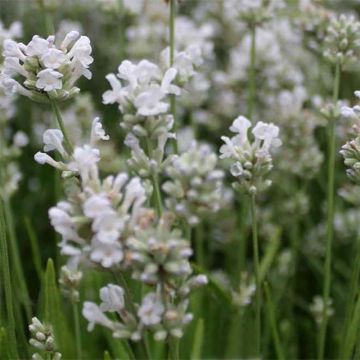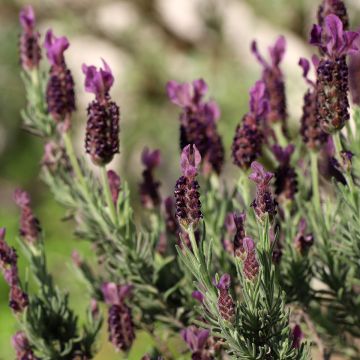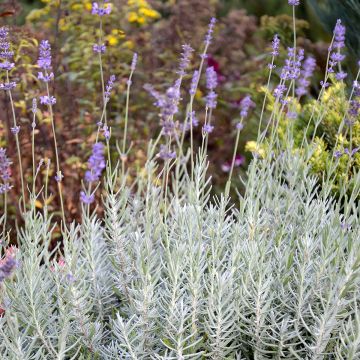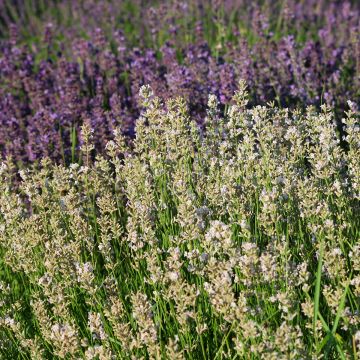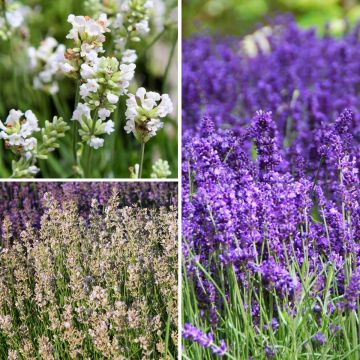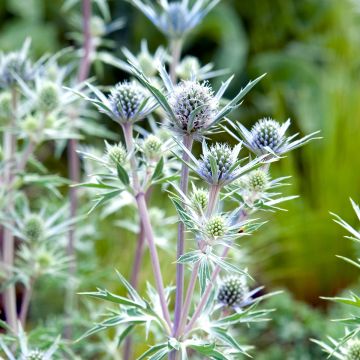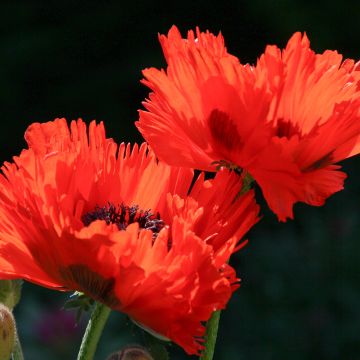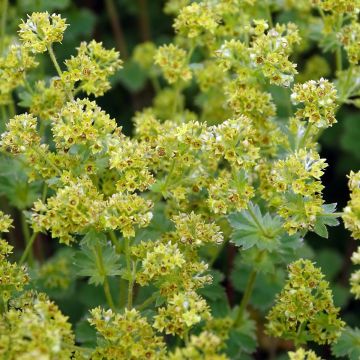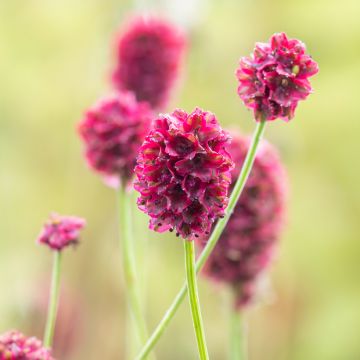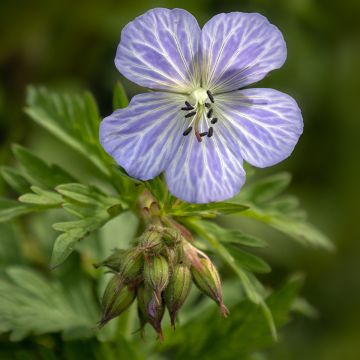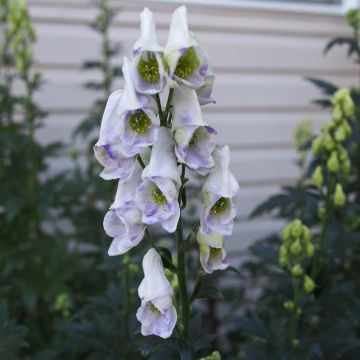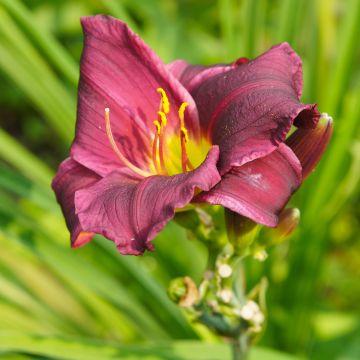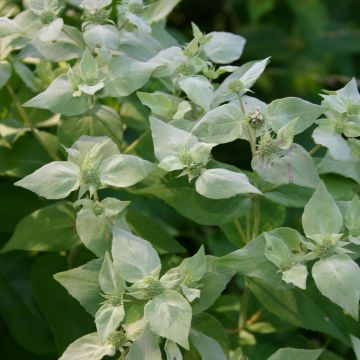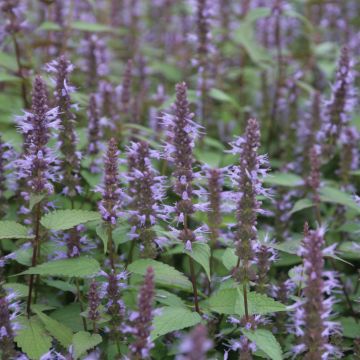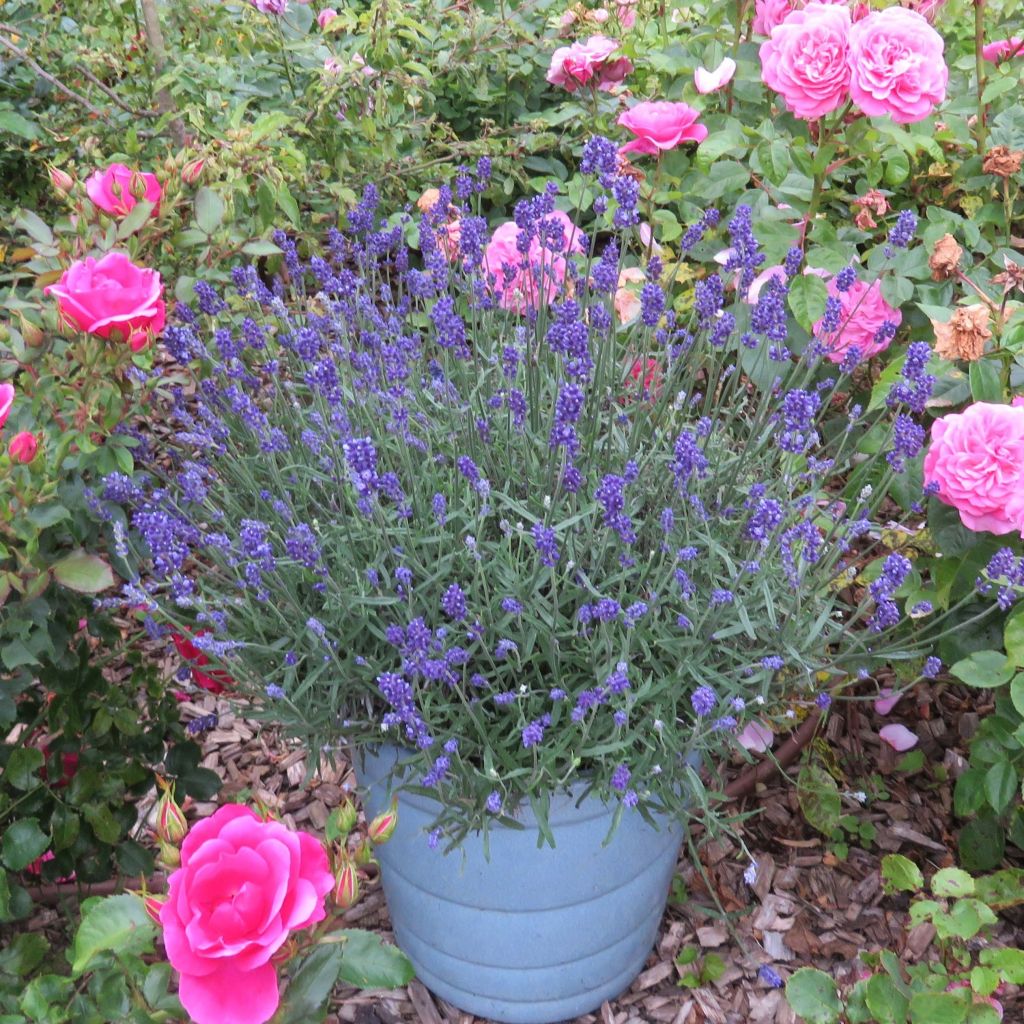

Lavandula angustifolia Bleu de Gien - True Lavender
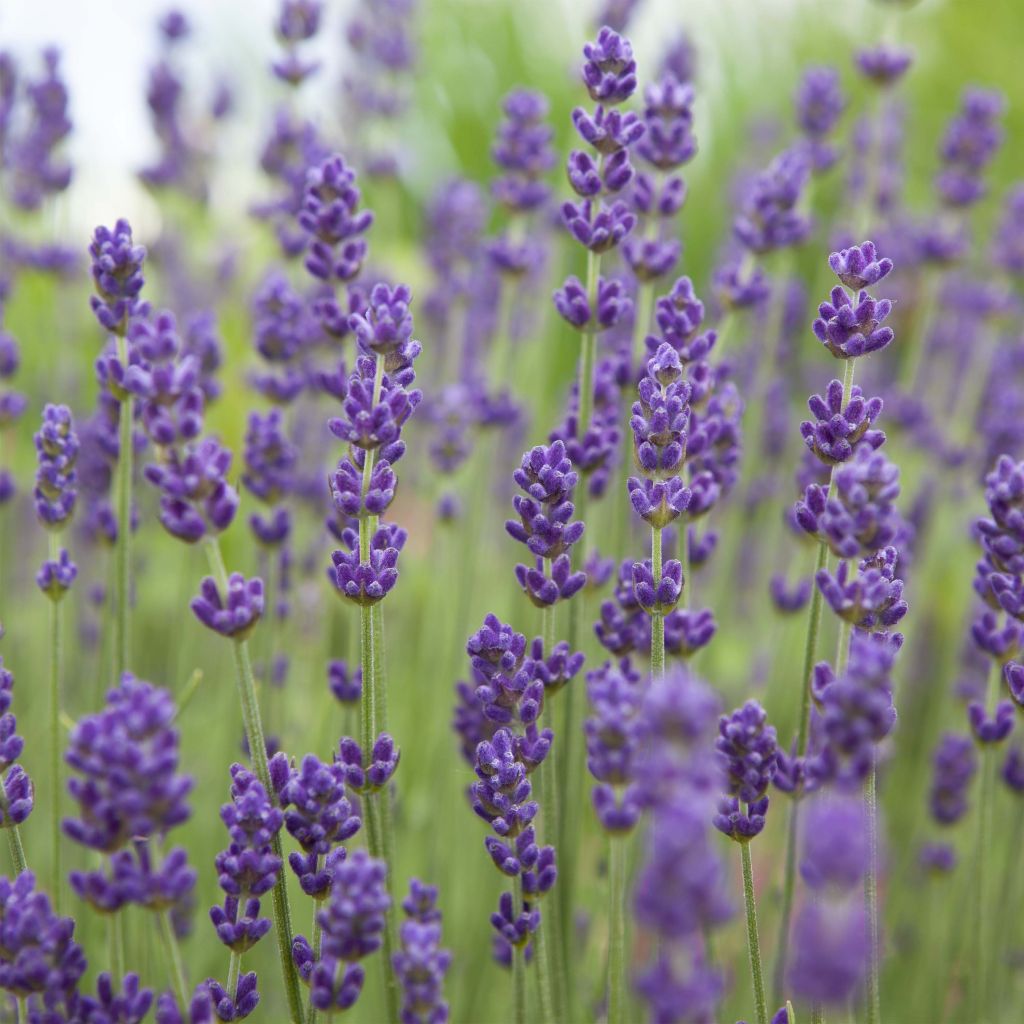

Lavandula angustifolia Bleu de Gien - True Lavender
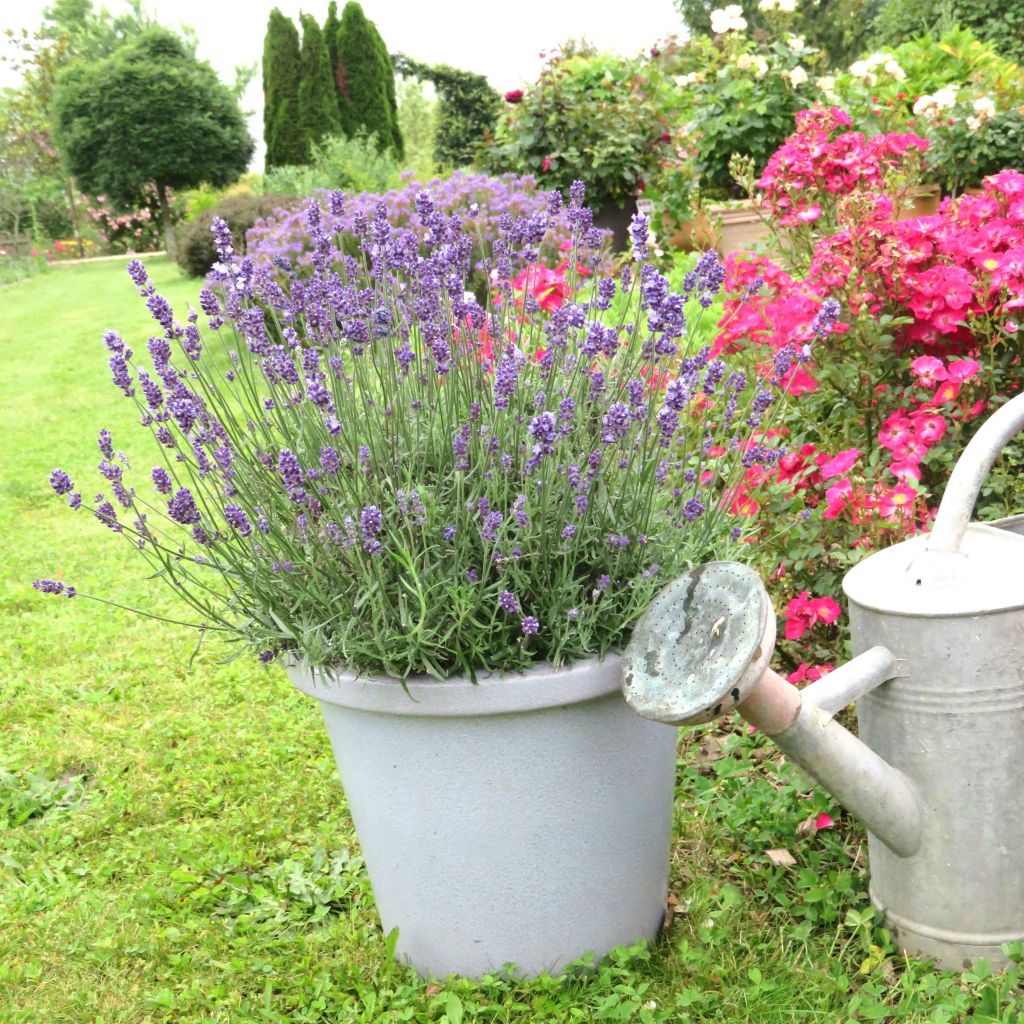

Lavandula angustifolia Bleu de Gien - True Lavender
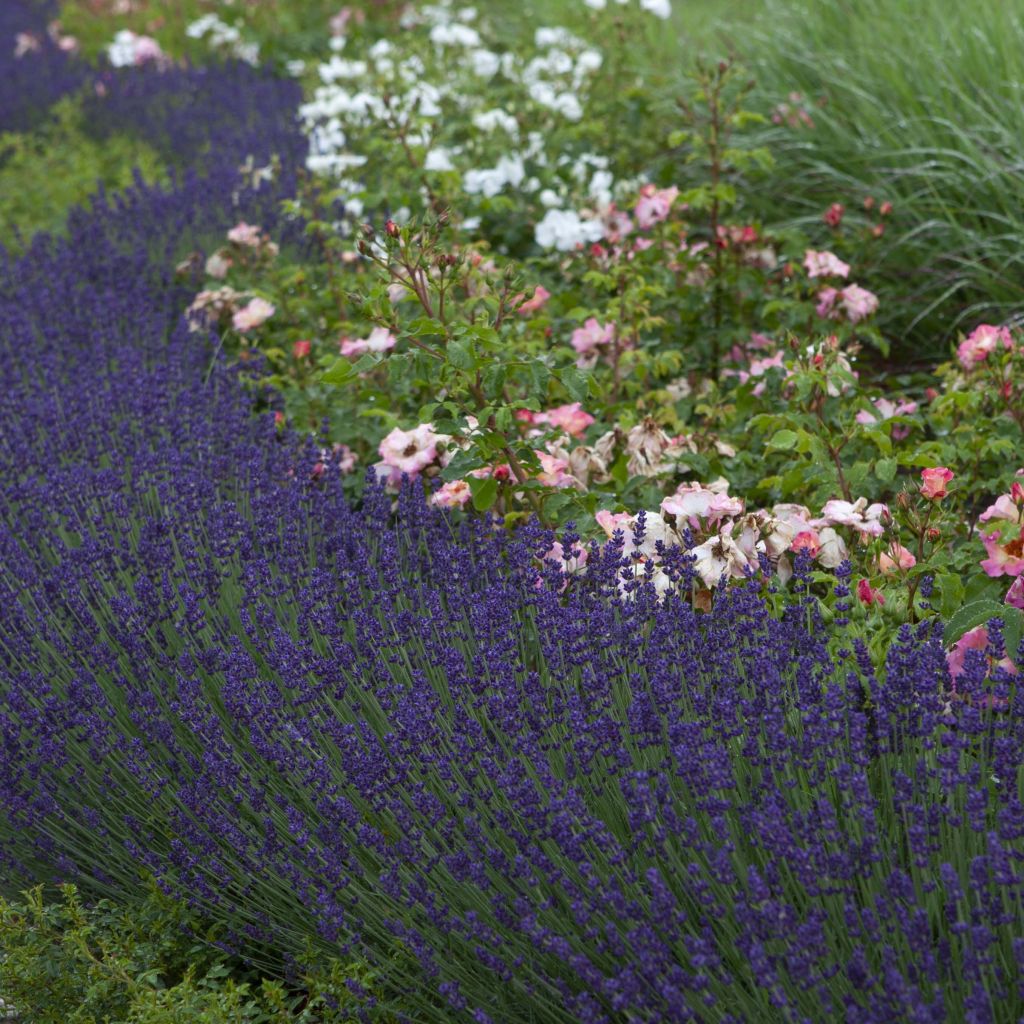

Lavandula angustifolia Bleu de Gien - True Lavender
Lavandula angustifolia Bleu de Gien - True Lavender
Lavandula angustifolia Bleu de Gien
True Lavender, English lavender
Why not try an alternative variety in stock?
View all →This plant carries a 12 months recovery warranty
More information
We guarantee the quality of our plants for a full growing cycle, and will replace at our expense any plant that fails to recover under normal climatic and planting conditions.
From €5.90 for pickup delivery and €6.90 for home delivery
Express home delivery from €8.90.
Delivery to Corse prohibited: UE law prohibits the import of this plant from mainland France to Corse as part of the fight against Xylella fastidiosa. Please accept our sincere apologies.
More information
Does this plant fit my garden?
Set up your Plantfit profile →
Description
Lavandula angustifolia 'Bleu de Gien' is a new variety of English lavender that stands out for its particularly long summer flowering and its excellent winter performance. In summer, it produces numerous well-filled spikes, with a captivating fragrance, which are a deep but bright violet-blue colour that catches the eye. The plant also charms with its small, evergreen, grey-green foliage that remains impeccable in winter. This compact lavender is ideal as a background plant in a border or in a rock garden. In the garden or in a container, it thrives in well-drained, not too rich soil, in full sun.
Lavandula angustifolia, sometimes called English lavender is a low shrub of the Lamiaceae family, related to sage, thyme, and rosemary. This montane species is widespread on limestone and rocky soils. The 'Bleu de Gien' variety forms a small-sized shrub, reaching 40 cm (16in) in all directions, with a flexible, dense, and erect habit, forming a rounded clump. Its decorative foliage persists in winter and does not discolour under the effect of cold and rain. It consists of aromatic, narrow leaves with rolled edges, of a beautiful grey-green colour. From June to August, this lavender is covered with a multitude of highly coloured, fragrant, and nectar-rich flowers, carried by cylindrical spikes at the end of thin, leafy, woody stems. It is actually the coloured calyxes, surrounding the flowers, that influence the perception of the colour of the inflorescence when viewed from a distance. In 'Bleu de Gien', the bright colour of the spikes is intermediate between blue and vivid violet.
This 'Bleu de Gien' lavender is hardy, but like most other lavenders, it needs to be planted in full sun in well-drained soil (even rocky soil), in a slightly raised bed, on a slope, or in a rock garden. In sunny and warm locations, its foliage will be more vibrant, and its flowers will exude an intense fragrance. An ornamental and Mediterranean plant par excellence, lavender can be used in a border, as a specimen plant, in a rock garden, in a container, by the seaside, and even as a low flowering hedge.
To imitate nature, one can be inspired by a scene that can be found on the hills of the Mediterranrean, by associating 'Bleu de Gien' lavender with small grasses such as Stipa pennata or Stipa tenuifolia, with their tousled appearance. These will contrast with its rounded shape. It will also work wonders when paired with evening primroses, perennial flax, astragals, euphorbias, or dark-coloured shrubs. Its association with pink roses (The Fairy, Eglantyne...) is perfect. You can also create beautiful containers to place on the patio or balcony. It is also possible to mix several lavender varieties together, creating an elegant display with a variety of flower and foliage colours, as well as plant sizes and volumes.
Properties: As lavender is a very nectar-rich plant, it contributes to the preservation of bees: the nectar from its flowers attracts bees, making it one of the most renowned honeys. The plant can be distilled to obtain highly sought-after essential oil for perfumery and aromatherapy. Its numerous therapeutic properties are still widely used: its essential oil has antiseptic, antispasmodic, healing, cleansing, diuretic, and other properties.
Report an error about the product description
Lavandula angustifolia Bleu de Gien - True Lavender in pictures
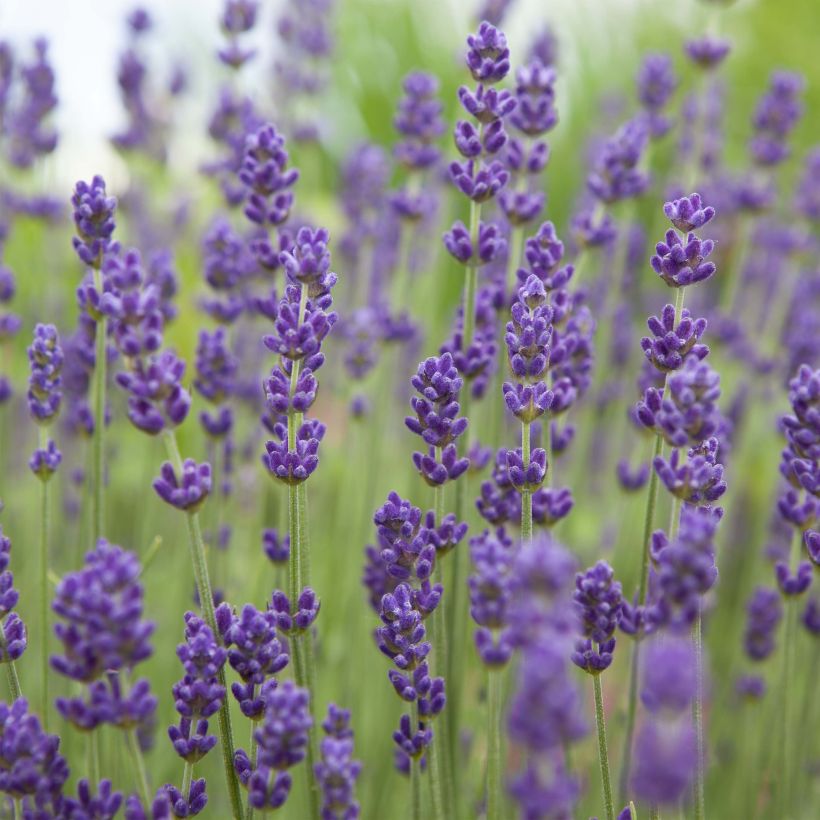

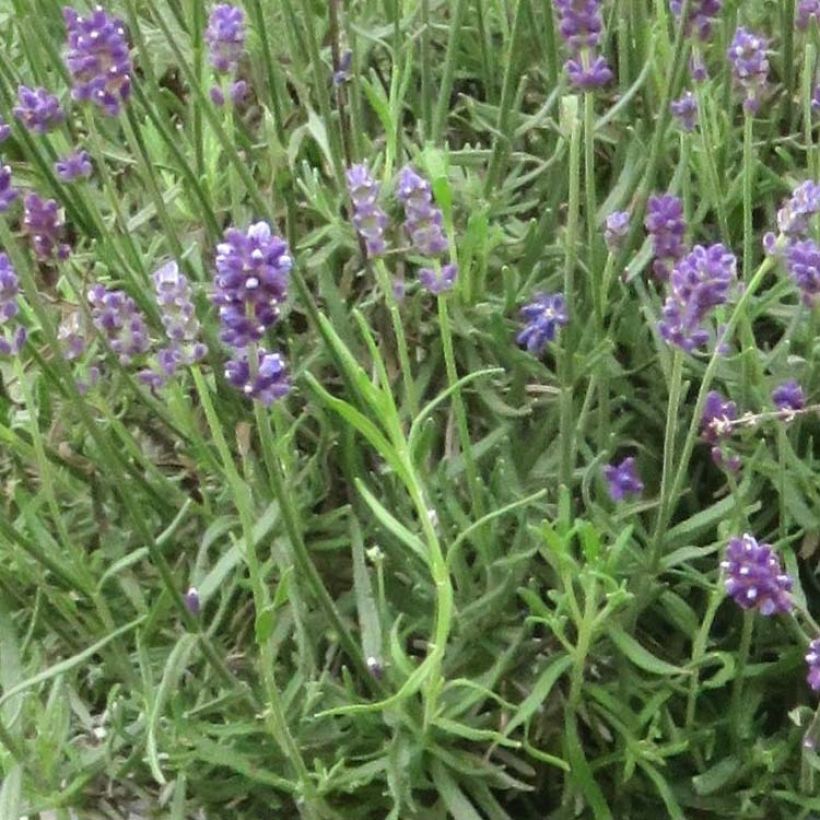

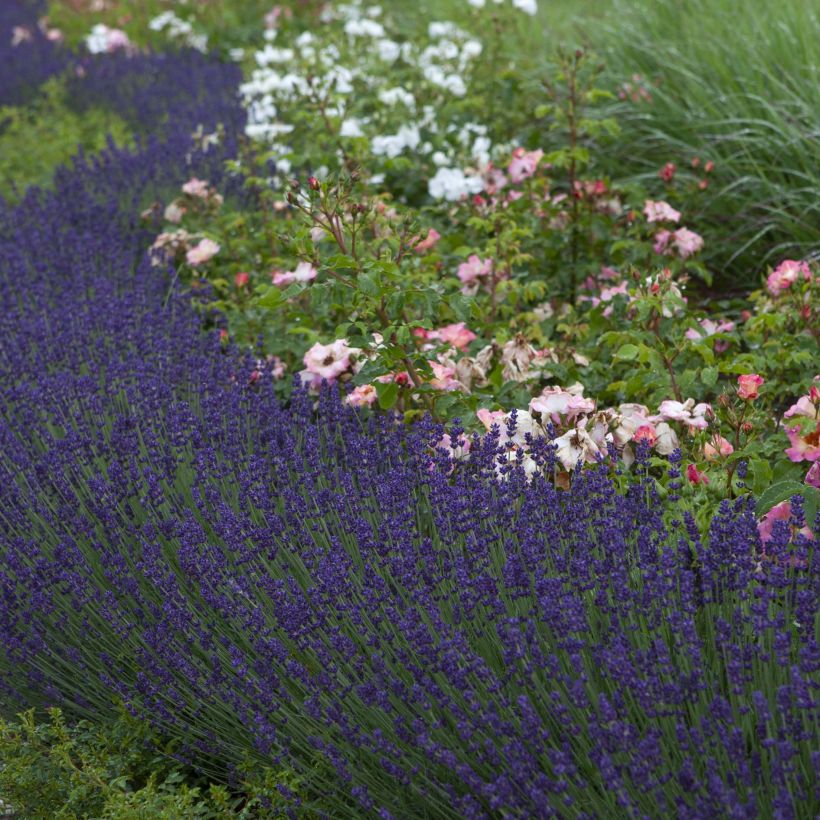

Flowering
Foliage
Plant habit
Botanical data
Lavandula
angustifolia
Bleu de Gien
Lamiaceae
True Lavender, English lavender
Cultivar or hybrid
Other Lavendula - Lavender
Planting and care
In nature, lavenders always live in poor and stony, dry, perfectly drained environments, in full sun. These plants detest summer watering, which makes them sick and causes them to disappear, as they are very sensitive to fungal diseases induced by the combination of heat and soil moisture. In winter, they require good drainage, and in summer, they need to be kept dry. Lavender will age better in poor soil, as its growth will be slower and it will have less tendency to become bare at the base. To limit this phenomenon, pruning should be done from a young age, after flowering or in autumn, just above the first buds that can be seen on the wood. Lavenders never regrow on old wood. The clump will thus branch out more and more, remaining compact, eventually forming beautiful round and dense cushions. When planting, provide them with what they like: gravel, stones, coarse sand, but definitely not potting soil, compost, or fertiliser!
.
Planting period
Intended location
Care
-
, onOrder confirmed
Reply from on Promesse de fleurs
Summer flowering perennials
Haven't found what you were looking for?
Hardiness is the lowest winter temperature a plant can endure without suffering serious damage or even dying. However, hardiness is affected by location (a sheltered area, such as a patio), protection (winter cover) and soil type (hardiness is improved by well-drained soil).

Photo Sharing Terms & Conditions
In order to encourage gardeners to interact and share their experiences, Promesse de fleurs offers various media enabling content to be uploaded onto its Site - in particular via the ‘Photo sharing’ module.
The User agrees to refrain from:
- Posting any content that is illegal, prejudicial, insulting, racist, inciteful to hatred, revisionist, contrary to public decency, that infringes on privacy or on the privacy rights of third parties, in particular the publicity rights of persons and goods, intellectual property rights, or the right to privacy.
- Submitting content on behalf of a third party;
- Impersonate the identity of a third party and/or publish any personal information about a third party;
In general, the User undertakes to refrain from any unethical behaviour.
All Content (in particular text, comments, files, images, photos, videos, creative works, etc.), which may be subject to property or intellectual property rights, image or other private rights, shall remain the property of the User, subject to the limited rights granted by the terms of the licence granted by Promesse de fleurs as stated below. Users are at liberty to publish or not to publish such Content on the Site, notably via the ‘Photo Sharing’ facility, and accept that this Content shall be made public and freely accessible, notably on the Internet.
Users further acknowledge, undertake to have ,and guarantee that they hold all necessary rights and permissions to publish such material on the Site, in particular with regard to the legislation in force pertaining to any privacy, property, intellectual property, image, or contractual rights, or rights of any other nature. By publishing such Content on the Site, Users acknowledge accepting full liability as publishers of the Content within the meaning of the law, and grant Promesse de fleurs, free of charge, an inclusive, worldwide licence for the said Content for the entire duration of its publication, including all reproduction, representation, up/downloading, displaying, performing, transmission, and storage rights.
Users also grant permission for their name to be linked to the Content and accept that this link may not always be made available.
By engaging in posting material, Users consent to their Content becoming automatically accessible on the Internet, in particular on other sites and/or blogs and/or web pages of the Promesse de fleurs site, including in particular social pages and the Promesse de fleurs catalogue.
Users may secure the removal of entrusted content free of charge by issuing a simple request via our contact form.
The flowering period indicated on our website applies to countries and regions located in USDA zone 8 (France, the United Kingdom, Ireland, the Netherlands, etc.)
It will vary according to where you live:
- In zones 9 to 10 (Italy, Spain, Greece, etc.), flowering will occur about 2 to 4 weeks earlier.
- In zones 6 to 7 (Germany, Poland, Slovenia, and lower mountainous regions), flowering will be delayed by 2 to 3 weeks.
- In zone 5 (Central Europe, Scandinavia), blooming will be delayed by 3 to 5 weeks.
In temperate climates, pruning of spring-flowering shrubs (forsythia, spireas, etc.) should be done just after flowering.
Pruning of summer-flowering shrubs (Indian Lilac, Perovskia, etc.) can be done in winter or spring.
In cold regions as well as with frost-sensitive plants, avoid pruning too early when severe frosts may still occur.
The planting period indicated on our website applies to countries and regions located in USDA zone 8 (France, United Kingdom, Ireland, Netherlands).
It will vary according to where you live:
- In Mediterranean zones (Marseille, Madrid, Milan, etc.), autumn and winter are the best planting periods.
- In continental zones (Strasbourg, Munich, Vienna, etc.), delay planting by 2 to 3 weeks in spring and bring it forward by 2 to 4 weeks in autumn.
- In mountainous regions (the Alps, Pyrenees, Carpathians, etc.), it is best to plant in late spring (May-June) or late summer (August-September).
The harvesting period indicated on our website applies to countries and regions in USDA zone 8 (France, England, Ireland, the Netherlands).
In colder areas (Scandinavia, Poland, Austria...) fruit and vegetable harvests are likely to be delayed by 3-4 weeks.
In warmer areas (Italy, Spain, Greece, etc.), harvesting will probably take place earlier, depending on weather conditions.
The sowing periods indicated on our website apply to countries and regions within USDA Zone 8 (France, UK, Ireland, Netherlands).
In colder areas (Scandinavia, Poland, Austria...), delay any outdoor sowing by 3-4 weeks, or sow under glass.
In warmer climes (Italy, Spain, Greece, etc.), bring outdoor sowing forward by a few weeks.

































